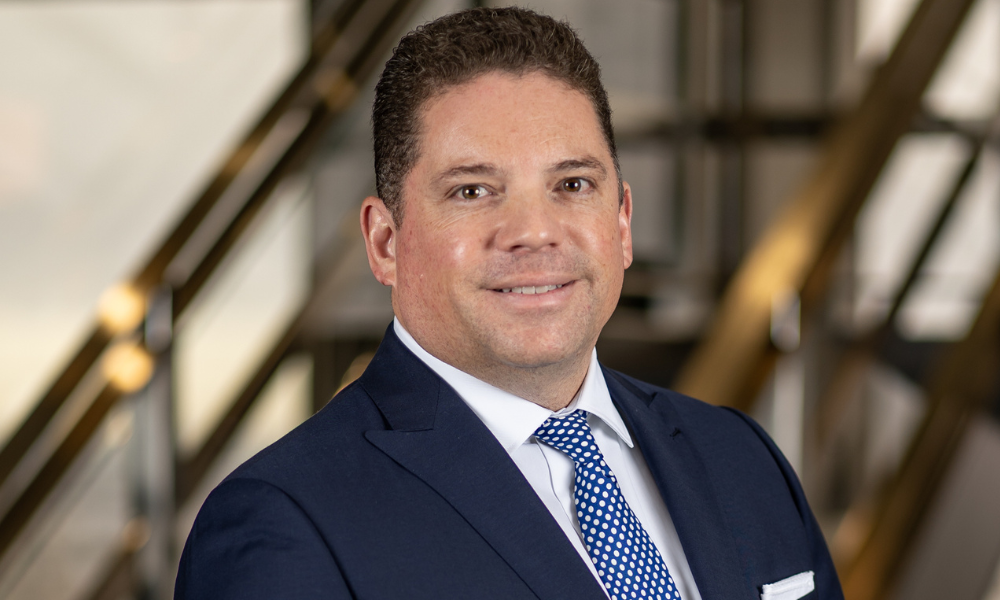Darren Coleman outlines some possible impacts, opportunities, and steps advisors can take as tariffs are delayed for another month

When dealing with a predictably unpredictable force, the best option might be to stay the course. That’s how Darren Coleman has been approaching client concerns around mounting trade tensions between the US and Canada, which came close to potentially devastating tariffs before an 11th-hour deal was reached on Monday. Coleman is the senior portfolio manager, private client group of Portage Cross Border Wealth Management of Raymond James, the largest cross-border practice in Canada. He outlined that, broadly speaking, he believes advisors should be reassuring clients and keeping them on course, focusing tactical tweaks on those clients most directly impacted by these tariffs.
“There’s always something out there to scare us, these big unpredictable events like COVID, 9/11, Y2K, there’s a pattern of a big existential threat with everyone running around terrified… all that uncertainty creates so much emotional engagement. Everyone wants to know the answer and nobody does,” Coleman says. “So all we can really do is take our queues from what the right course of action was in all those other previous big world-changing moments, and that was to not to anything.”
Despite the deal to delay tariffs by 30 days while the US and Canada negotiate, there is still a risk that they take effect. Nevertheless, Coleman cautions against any kind of overreaction, even among clients who will be directly impacted by these tariffs, whether they be the owners of an export business, snowbirds, or clients in the process of moving to the US for work. He notes that this story is developing rapidly and may have significant developments that can’t be planned for now. He outlined, though, how he’s working with each of those key cross-border client segments and explained how advisors should be messaging their actions to clients now.
“In general I think advisors should be taking a page from The Hitchhiker’s Guide to the Galaxy, where rule number one is ‘Don’t Panic,’” Coleman says.
Business owners with customers south of the border may be facing some significant uncertainty right now. Coleman acknowledges that as a result of these tariffs — and their corresponding retaliation by Canada — these businesses may see their costs rising by 25 per cent immediately. He says, however, that many of those businesses have been through some significant shocks already, notably the COVID-19 pandemic.
There may be much more ‘pivot’ talk from these businesses soon, he says, but the problems they now face can be overcome and the resilience these businesses built during those pandemic years may serve them well in the coming weeks and months.
The announced tariffs — as well as the bellicose threats we saw before their implementation — have perhaps been most acutely felt in currency markets. On Monday the Canadian dollar fell to its lowest point against the US dollar since 2003. Snowbirds and other clients who spend significant time in the US may be feeling some difficulties as their purchasing power is eroded. Coleman, however, says that most of those clients should already be in positions that offer USD returns and USD income. Those positions should offer a hedge against their currency risk.
There may be even some opportunities for clients and advisors given the strength of the US dollar and other US assets. Many snowbirds in Florida, for example, are facing higher insurance premiums due to more frequent and severe hurricanes. They could realize a significant gain on those properties if they chose to sell now.
Coleman also sees an opportunity for a broader client set as the Canadian dollar declines against the USD. A globally-diversified portfolio should have some USD exposure which may have further buoyed the gains many investors in US assets saw over recent years. Coleman believes that this might be a moment for advisors to develop a currency strategy with their clients. While the Canadian dollar might not recover tomorrow, he expects that CAD will find its floor and regain some value as Canada gets on firmer economic footing. If advisors reallocate when CAD is on the upswing, he argues that may be too late.
With these tariffs also comes a wider sense of uncertainty for many Canadians who might be planning a cross-border move. Whether due to risks to grant funding, changes in the business environment, or an unforeseen development some of those clients may be reconsidering their path. Coleman says he bakes those possibilities into his plans. “I don’t think it’s great to build a one-way trip,” he says.
As other advisors look to manage their clients’ cross-border exposures in this environment, Coleman emphasizes the important of a strong network. That means knowing a good immigration lawyer who can help clients navigate visa issues and treaties. It also means building relationships with accountants who can manage the difficult tax issues many clients face when they cross the border, as well as estate planning lawyers who can help ensure the most efficient disposal of assets. Advisors with less cross-border experience, too, may want to reach out to a specialist advisor like Coleman to help their clients navigate issues and risks.
Steps like building a network and capturing currency opportunities could be an efficient way for advisors to use the current crisis. Couched in a message of reassurance, Coleman believes there’s also an opportunity to deepen client relationships and clients’ own understanding of their financial lives and risk tolerances.
“One of the things that comes out of this, I think, is a potentially better conversation with clients,” Coleman says. “When their worldview or plans have been shaken, that’s a time to ask them if something has fundamentally changed. For those who have had something change, that’s worth a conversation. For many, though, nothing will have changed except their emotional state. Then the conversation is about what’s causing that and how much risk they can actually take. This is a really good opportunity for advisors to refresh those conversations.”



